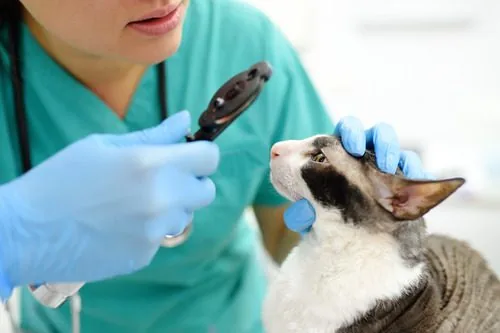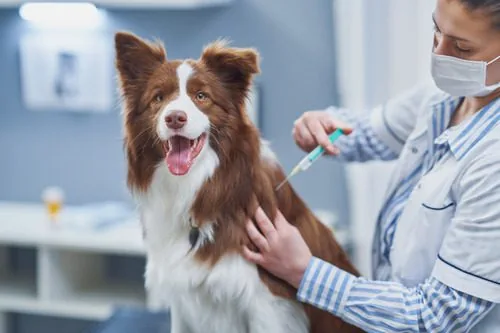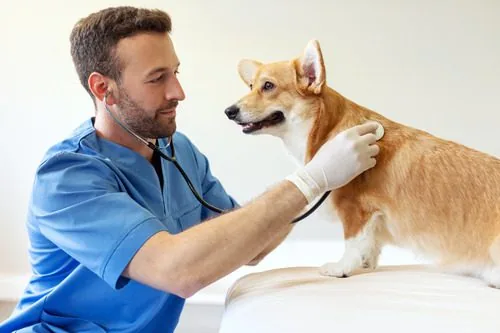Cat Eye Infection: Symptoms & Treatment
When your cat has an irritated or weepy eye, it’s hard not to worry if they’re squinting, pawing at their face, or acting unlike themselves. A cat eye infection can be uncomfortable and even painful, depending on what’s causing it. While it’s tempting to assume the issue will resolve on its own, eye problems in cats often require a veterinary visit to prevent complications and preserve your cat’s vision. This blog will walk through the most common symptoms of a cat eye infection, the possible causes behind it, and how veterinarians diagnose and treat these issues. If your cat is showing signs of an eye problem, call Saratoga Veterinary Hospital at (518) 587-3832 to schedule an appointment.

Recognizing the Signs of a Cat Eye Infection
A cat eye infection doesn’t always look severe at first. Sometimes, the symptoms may come on gradually. Knowing what to look for can help you act quickly and minimize your cat’s discomfort.
Common Symptoms to Watch For
Cats with an eye infection may show one or more of the following signs:
- Redness in one or both eyes
- Discharge that may be clear, yellow, green, or thick and sticky
- Squinting or excessive blinking
- Swelling of the eyelids or surrounding tissue
- Pawing or rubbing at the eyes
- Cloudiness or a noticeable change in eye color
- Third eyelid protrusion (a pink membrane partially covering the eye)
- Sensitivity to light
- Behavioral changes such as hiding or reduced appetite
If your cat’s symptoms are persistent or worsening, it’s important to seek veterinary attention. Prompt treatment can help resolve the issue and prevent long-term damage.
What Causes a Cat Eye Infection?
A variety of conditions can lead to a cat eye infection. Understanding these causes helps veterinarians choose the most appropriate treatment approach. While some cases are relatively mild, others may signal an underlying health issue that needs additional care.
Viral Infections
Upper respiratory viruses are a common culprit in cat eye infection cases. Feline herpesvirus (FHV-1) and calicivirus frequently cause conjunctivitis, which is the inflammation of the tissue lining the eyelids. These viruses are especially common in shelters or multi-cat households. In many cases, the infection becomes recurrent, flaring up during times of stress or illness.
Bacterial Infections
Bacteria such as Chlamydophila felis or Mycoplasma can cause or worsen eye infections in cats. These organisms are often spread through close contact with infected cats and may occur in conjunction with viral infections. Bacterial eye infections often produce thicker discharge and more pronounced redness or swelling.
Fungal and Parasitic Infections
While rare, fungal or parasitic infections can affect a cat’s eyes, especially in certain geographic areas or if the cat has a weakened immune system. These infections may result in more severe inflammation and damage if not treated quickly.
Foreign Bodies and Eye Trauma
Dust, plant matter, or even a scratch from another animal can irritate or damage the eye, leading to secondary infection. Eye trauma may also occur during rough play or accidents. A cat that suddenly develops eye redness or keeps one eye shut might have an injury that requires immediate care.
Allergies and Irritants
Some eye problems stem from non-infectious sources like allergens or environmental irritants (such as cigarette smoke or scented cleaning products). These can cause watery eyes and mild inflammation, which sometimes mimic an infection but require a different type of treatment.
How Veterinarians Diagnose a Cat Eye Infection
When you bring your cat to Saratoga Veterinary Hospital for an eye issue, your veterinarian will perform a thorough exam to identify the cause and severity of the infection. This evaluation includes several steps to ensure an accurate diagnosis.
Physical Examination
Your vet will begin by examining your cat’s overall health, including a close inspection of the eyes, eyelids, and surrounding tissue. They’ll check for visible signs of trauma, swelling, or discharge.
Fluorescein Stain Test
To determine if there are any corneal ulcers or scratches, your vet may use a fluorescein stain. This special dye highlights damage to the corneal surface and helps assess whether the infection has led to more serious injury.
Tear Production and Eye Pressure Tests
Conditions like dry eye or glaucoma can mimic or contribute to eye infections. Your veterinarian may perform a Schirmer tear test to measure tear production and a tonometry test to check intraocular pressure.
Sample Collection and Lab Testing
In some cases, a small sample of the eye discharge or tissue may be collected to identify the specific bacteria, virus, or fungus involved. This helps guide the most effective treatment approach, especially for recurring or severe infections.
Veterinary Treatment Options for Cat Eye Infections
Once your veterinarian has diagnosed the cause of your cat’s eye infection, they’ll tailor a treatment plan based on the underlying issue and the severity of symptoms. Treatment may involve topical medications, oral medications, or supportive care.
Topical Treatments
Most cat eye infections are treated with eye drops or ointments that contain antibiotics, antivirals, or anti-inflammatory medications. These are applied directly to the affected eye, sometimes several times a day.
Oral Medications
If the infection is severe or systemic, your cat may also need oral antibiotics or antiviral medications to help clear the infection from the inside out. These are especially common in cases involving upper respiratory illness.
Supportive Care
Cats with eye infections often benefit from supportive care like humidifiers to ease congestion, cleaning of the eye discharge with a vet-approved solution, and a quiet, stress-free environment while they heal.
Follow-Up Appointments
Follow-up visits allow your veterinarian to monitor your cat’s recovery and adjust the treatment plan if needed. In some cases, ongoing management may be necessary for cats with chronic viral infections or immune-related conditions.
Can Cat Eye Infections Be Prevented?
Preventing a cat eye infection isn’t always possible, but you can reduce your cat’s risk with proactive care and awareness of potential triggers. Preventive steps are especially important for cats with a history of recurrent infections.
- Vaccination: Vaccinating your cat against feline herpesvirus and calicivirus can help lower the risk of infections that affect the eyes. While these vaccines don’t prevent infection entirely, they can lessen the severity and frequency of flare-ups.
- Clean and Safe Environment: Maintaining a clean environment—especially in multi-cat households—helps reduce the spread of contagious infections. Regular cleaning of food bowls, litter boxes, and bedding makes a significant difference.
- Monitoring for Early Signs: Checking your cat’s eyes regularly can help you catch issues before they worsen. If you notice mild redness or discharge, contact your veterinarian to decide whether a visit is needed.
- Managing Stress and Underlying Health Issues: Stress and poor immune function can trigger eye infections, particularly in cats with chronic viral conditions. Minimizing environmental stressors and keeping up with routine veterinary care helps your cat stay healthier overall.
Know When to Contact Saratoga Veterinary Hospital
A cat eye infection may seem minor at first, but delaying care can lead to discomfort, worsening symptoms, or even long-term damage to your cat’s vision. If you see signs of eye redness, discharge, or squinting that last longer than a day, it’s time to contact your veterinarian. Saratoga Veterinary Hospital provides expert diagnostics and treatment for cat eye infections and other vision-related issues. Call us at (518) 587-3832 to schedule an appointment and help your cat feel more comfortable, faster. Our veterinary team is here to support your cat’s health and well-being with attentive, compassionate care.
Recent Posts
Dog Nose Dripping: Why Your Dog Has a Runny Nose
Dog Nose Dripping: Why Your Dog Has a Runny Nose A dog’s nose is an important part…
Lyme Disease Vaccines for Dogs
Lyme Disease Vaccines for Dogs Protecting your dog from Lyme disease is an essential step in supporting…
Kennel Cough Vaccine
Kennel Cough Vaccine Kennel cough is a highly contagious respiratory condition that can affect dogs of all…
What Is the Pet Insurance Waiting Period?
What Is the Pet Insurance Waiting Period? When you decide to invest in pet insurance, you may…
How Does Pet Insurance Work?
How Does Pet Insurance Work? Understanding how pet insurance works can help you make informed decisions about…
About Saratoga Veterinary Hospital
Saratoga Veterinary Hospital is proud to serve as your local veterinarian of choice in WIlton, NY and the surrounding areas. Since its founding in 1973 by Dr. Sofarelli, our animal hospital’s main goal has been to strengthen the human-animal bond with exceptional veterinary medicine and client services.







